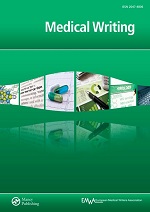
Volume 21, Issue 3 - Writing Matters
Pleasing the reader by pleasing the eye—Part 1 The role of format and design in readability
Authors: Gabriele Berghammer, Anders Holmqvist
Abstract
Whoever writes wants to be read. Yet, even if we succeed in creating an informative, logically structured, and adequately worded text tailored to our target audience, i.e., text we consider to have an adequate level of readability, our documents may still go unread—or read with antipathy. Next to linguistic factors, therefore, there is a wide range of other aspects determining how well we understand a text, including layout, typography, or cultural adequacy. Documents people can use effectively and with ease have language, graphics, and design combine into a harmonious whole. Good design helps arouse interest and singles a text out from many others that vie for our attention. In short, good design is no luxury. This article is the first in a series of assays on the role of format and design in readability. Rather than attempting to transform writers into graphics designers, the goal is to have writers see the beauty of layout and typography and have them harmoniously blend with the content to be conveyed.
 Download the full article
Download the full article
References
- Jobs S. You've got to find what you love. Commencement address delivered on 12 June 2005. Standford University News Available from: http://news.stanford.edu/news/2005/june15/jobs-061505.html
- Raynor DK, Blenkinsopp A, Knapp P, et al. A systematic review of quantitative and qualitative research on the role and effectiveness of written information available to patients about individual medicines. Health Technol Assess 2007;11(5).
- Doak C, Doak L, Root J. Health literacy studies. Teaching patients with low literacy skills. 2nd ed. Philadelphia: J. B. Lippincott Company; 1996. Available from: http://www.hsph.harvard.edu/healthliteracy/resources/doak-book/index.html
- DuBay WH. The Principles of Readability. 2004. Available from: http://www.nald.ca/library/research/readab/cover.htm
- Klare GR. The measurement of readability. Ames, Iowa: Iowa State University Press; 1963.
- McLaughlin GH. Proposals for british readability measures. In: Downing J, Brown AL (eds). The third international reading symposium. London: Cassell; 1968. p. 186–205.
- Dale E, Chall JS. The concept of readability. Elementary English 1949;26:19–26.
- Kandula S, Zeng-Treitler Q. Creating a gold standard for the readability measurement of health texts. AMIA Annu Symp Proc 2008; 353–7.
- Mostenthal PB, Kirsch IS. A new measure for assessing document complexity: The PMOSE/IKIRSCH document readability formula. J Adolesc Adult Literacy 1998;41:638–657.
- Arnold CL, Davis TC, Frempong JO, et al. Assessment of newborn screening parent education materials. Pediatrics 2006;117:S320–5.
- Gray WS, Leary B. What makes a book readable? Chicago: University of Chicago Press; 1935.
- Whitbread D. The design manual. University of New South Wales Press Ltd.; 2001.
- Garfield S. Just my Type. London: Gotham; 2011.
- Reynolds LJ. Lloyd J. Reynolds Collection. Autobiographical Notes. 1977. Available from: http://library.reed.edu/using/collections/findingaids/reynolds/ljrauto.htm
- Schwartz T. The Dance of the Pen. Reed Magazine; 2003. Available from: http://web.reed.edu/reed_magazine/aug2003/features/dance_of_pen/index.html
- Ascender Corporation. Charles Biglow Available from: http://www.ascendercorp.com/designers/charles-bigelow/
- Carter R, Meggs PB, Day B. Typographic design: form and communication. John Wiley & Sons; 2011.
- Waller R. Making connections: typography, layout and language. AAAI Technical Report FS-99-04 1999. Available from: http://www.aaai.org/Papers/Symposia/Fall/1999/FS-99-04/FS99-04-002.pdf
Search
Articles
Links
Editoral Board
Editor-in-Chief
Co-Editors
Managing Editor
Victoria White
Deputy Managing Editor
Alicia Brooks Waltman
Associate Editors
Section Editors
AI/Automation
Biotechnology
Digital Communication
EMWA News
Freelancing
Gained in Translation
Getting Your Foot in the Door
Good Writing Practice
Pablo Izquierdo / Alison McIntosh
In the Bookstores
Publications
Medical Communications/Writing for Patients
Medical Devices
My First Medical Writing
News from the EMA
Pharmacovigilance
Regulatory Matters
Regulatory Public Disclosure
Louisa Ludwig-Begall / Sarah Kabani
The Crofter: Sustainable Communications
Veterinary Writing
Editors Emeritus
Layout Designer
Chris Monk
 Visit the EMWA website
Visit the EMWA website